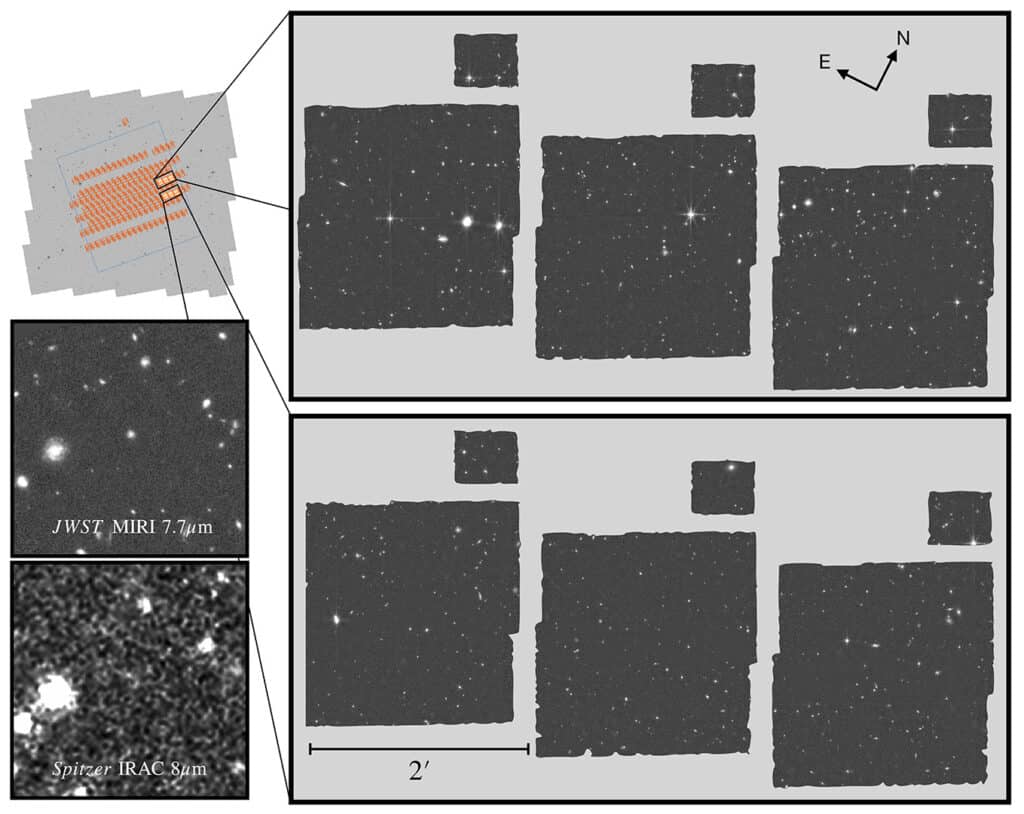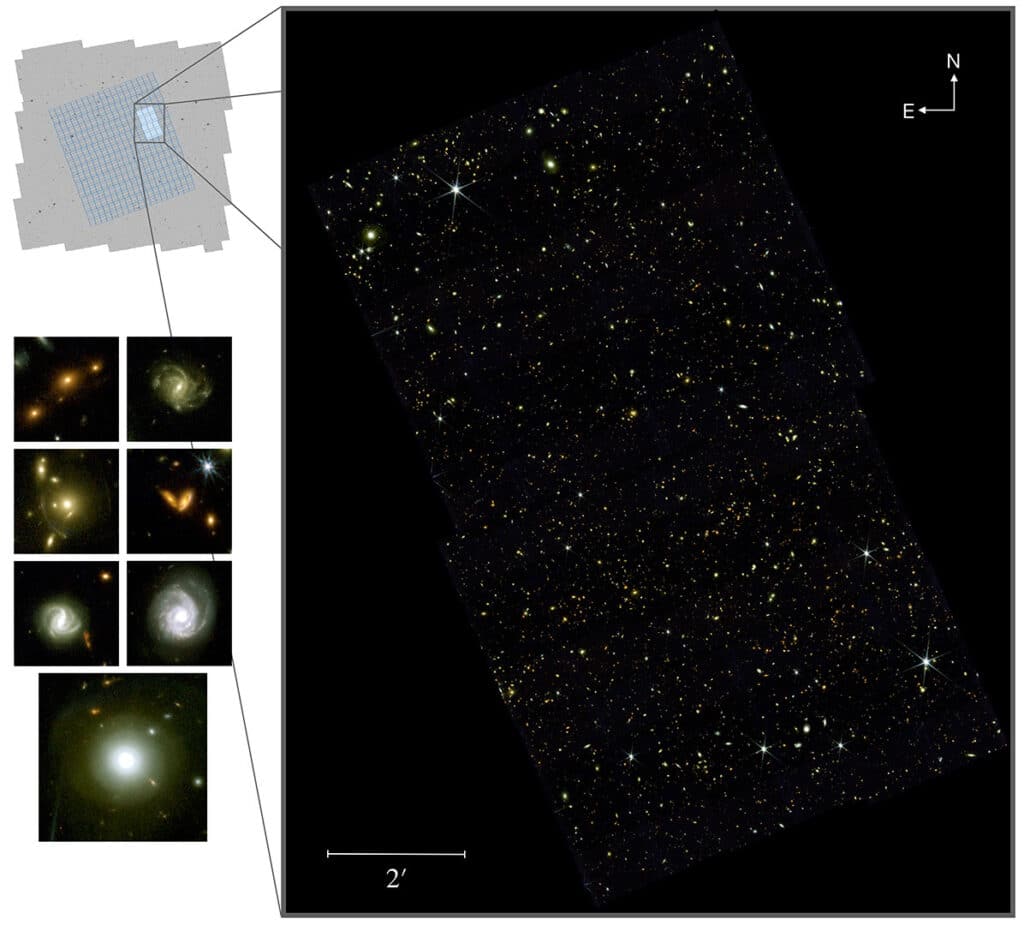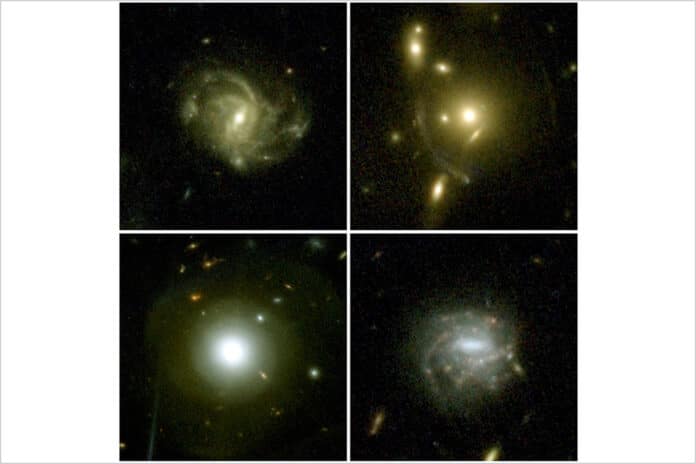JWST’s Near-Infrared Camera (NIRCam) and Mid-Infrared Instrument (MIRI) captured mosaic photos in early January, which were released publicly by scientists from the COSMOS-Web program.
This first snapshot of COSMOS-Web contains about 25,000 galaxies—an astonishing number larger than even what sits in the Hubble Ultra Deep Field. It’s one of the largest JWST images taken so far. And yet it’s just 4 percent of the data we will get for the full survey. When it is finished, this deep field will be astoundingly large and overwhelmingly beautiful.
The images taken so far show incredible detail compared with those taken previously by other observatories, such as the Hubble Space Telescope and Spitzer Space Telescope.
Compared to earlier photographs acquired by observatories like the Hubble Space Telescope and Spitzer Space Telescope, the images thus far reveal astounding detail.

COSMOS-Web will produce a broad and in-depth study of up to 1 million galaxies to map the universe’s oldest features. COSMOS-Web will map 0.6 square degrees of the sky with NIRCam over 255 hours of observational time, or roughly the area of three full moons, and 0.2 square degrees with MIRI.
COSMOS-Web is the most expansive area JWST will observe in its first year, enabling the study of galaxies across a wide range of local environments.
COSMOS-Web has three primary science goals:
- Furthering our understanding of the Reionization Era, roughly 200,000 to 1 billion years after the Big Bang;
- identifying and characterizing early massive galaxies in the first 2 billion years; and
- Studying how dark matter has evolved with the stellar content of galaxies.
Santosh Harish, a postdoctoral research associate at RIT, said, “JWST has delivered such stunning images of this region that sources are literally popping out in every small patch of the observed sky. What were thought to be compact objects based on the best images we had so far, the JWST observations are now able to resolve these objects into multiple components and, in some cases, even reveal the complex morphology of these extragalactic sources. With these first observations, we have just barely scratched the surface of what is to come with the completion of this program next year.”

The mosaics were made from six telescope pointings taken on January 5–6. In April and May, the telescope will perform 77 pointings or almost half the field, and the final 69 pointings are planned for December 2023 and January 2024.
Principal investigator Jeyhan Kartaltepe, an associate professor at Rochester Institute of Technology’s School of Physics and Astronomy, said, “It’s incredibly exciting to get the first data from the telescope for COSMOS-Web. Everything worked beautifully, and the data are even better than we expected. We’ve been working hard to produce science-quality images for our analysis, and this is just a drop in the bucket of what’s to come.”
Journal Reference:
- Caitlin M. Casey, Jeyhan S. Kartaltepe et al. COSMOS-Web: An Overview of the JWST Cosmic Origins Survey. arXiv (2022). DOI: 10.48550/arxiv.2211.07865
